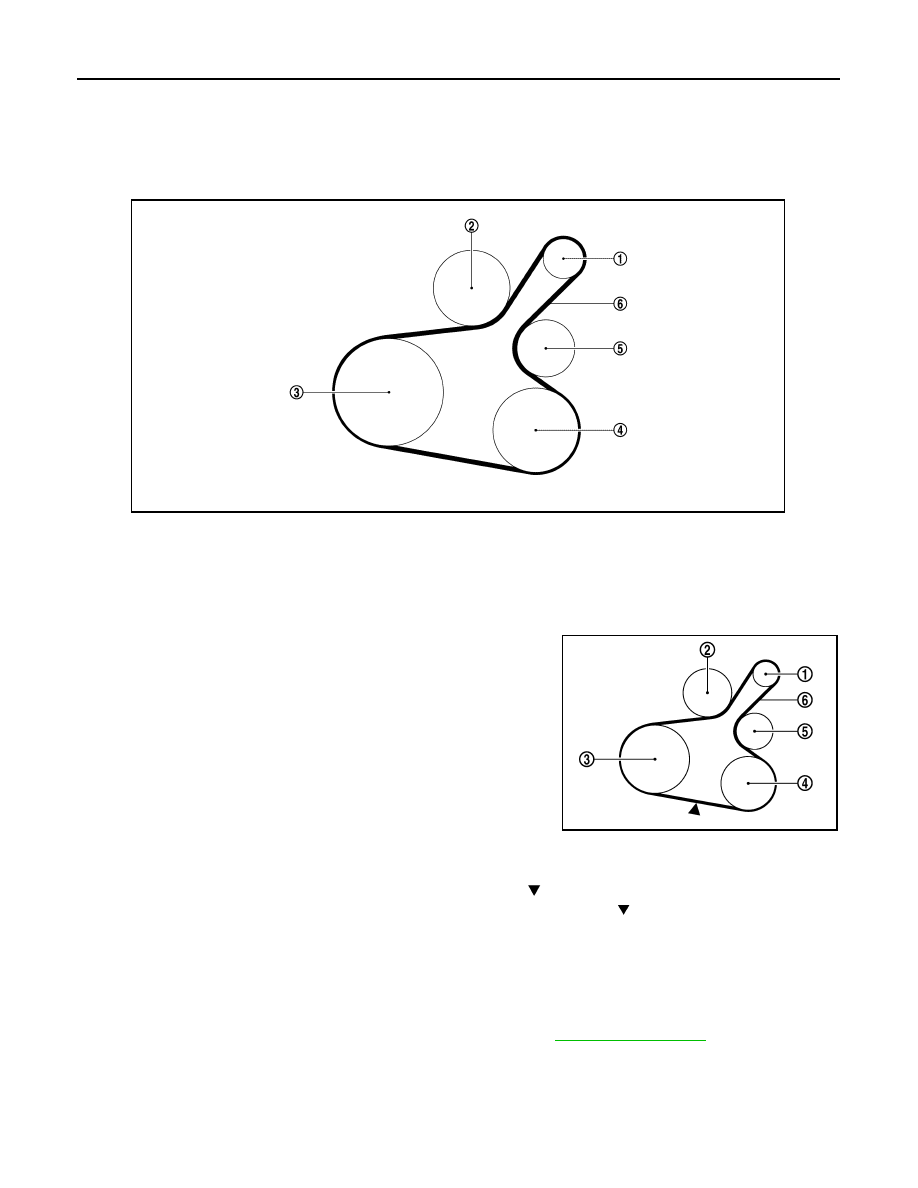Nissan Versa Sedan. Instruction - part 564

MA-14
< PERIODIC MAINTENANCE >
ENGINE MAINTENANCE
ENGINE MAINTENANCE
DRIVE BELT
DRIVE BELT : Exploded View
INFOID:0000000009269041
DRIVE BELT : Inspection
INFOID:0000000009269042
• Inspection should be done only when engine is cold or over 30
minutes after the engine is stopped.
• Visually check belt for wear, damage, and cracks on inside and
edges.
• Turn crankshaft pulley clockwise twice, and check that the tension on all pulleys equalizes before testing.
• When measuring deflection, apply 98.1 N (10 kg, 22 lb) at the ( ) marked point.
• Measure the belt tension and frequency with acoustic tension gauge at the ( ) marked point.
CAUTION:
• When the tension and frequency are measured, the acoustic tension gauge should be used.
• When checking immediately after installation, first adjust it to the specified value. Then, after turning
crankshaft two turns or more, readjust to the specified value to avoid variation in deflection between
pulleys.
1.
Generator
2.
Water pump
3.
Crankshaft pulley
4.
A/C compressor (with A/C models)
Idler pulley (without A/C models)
5.
Idler pulley
6.
Drive belt
JSBIA1053ZZ
(1)
: Generator
(2)
: Water pump
(3)
: Crankshaft pulley
(4)
: A/C compressor (with A/C models)
: Idler pulley (without A/C models)
(5)
: Idler pulley
(6)
: Drive belt
Belt deflection/belt tension and frequency
: Refer to
.
PBIC3642E